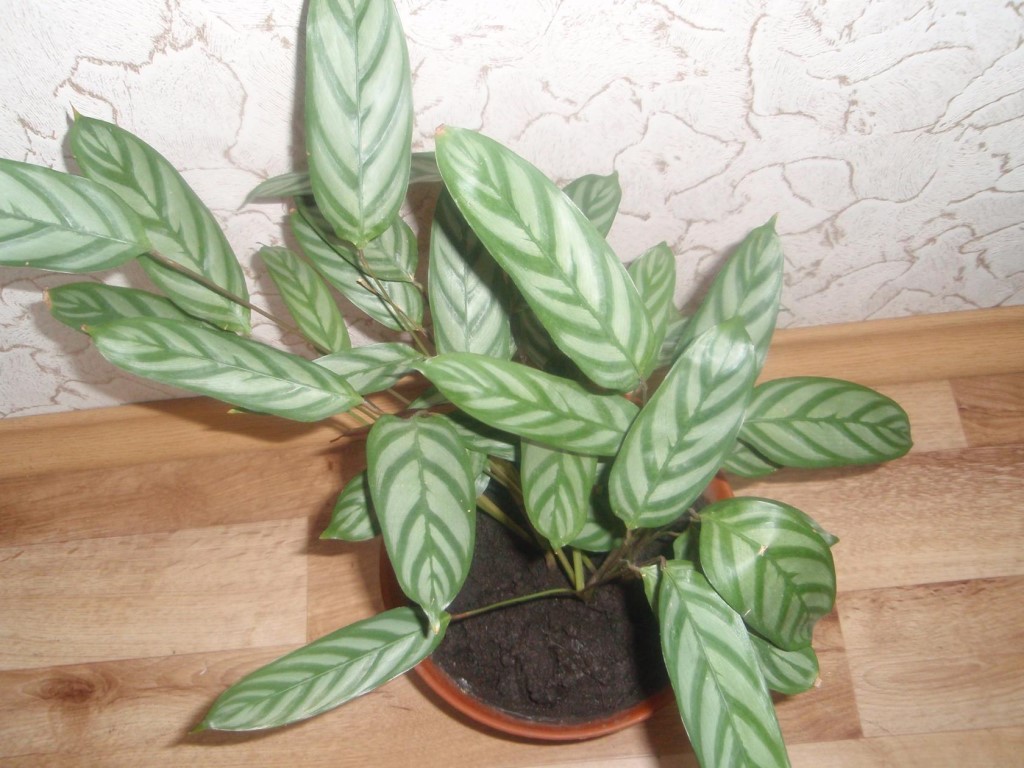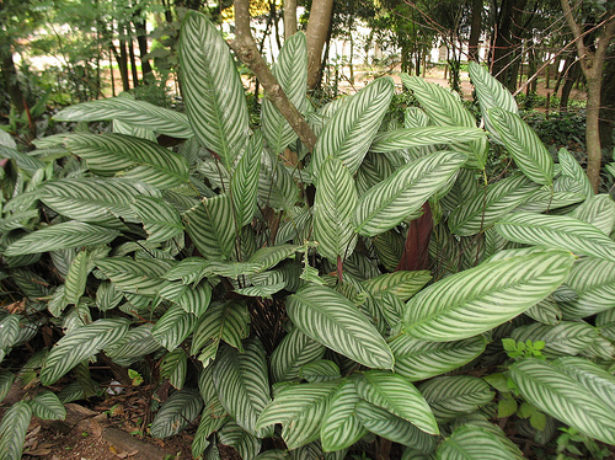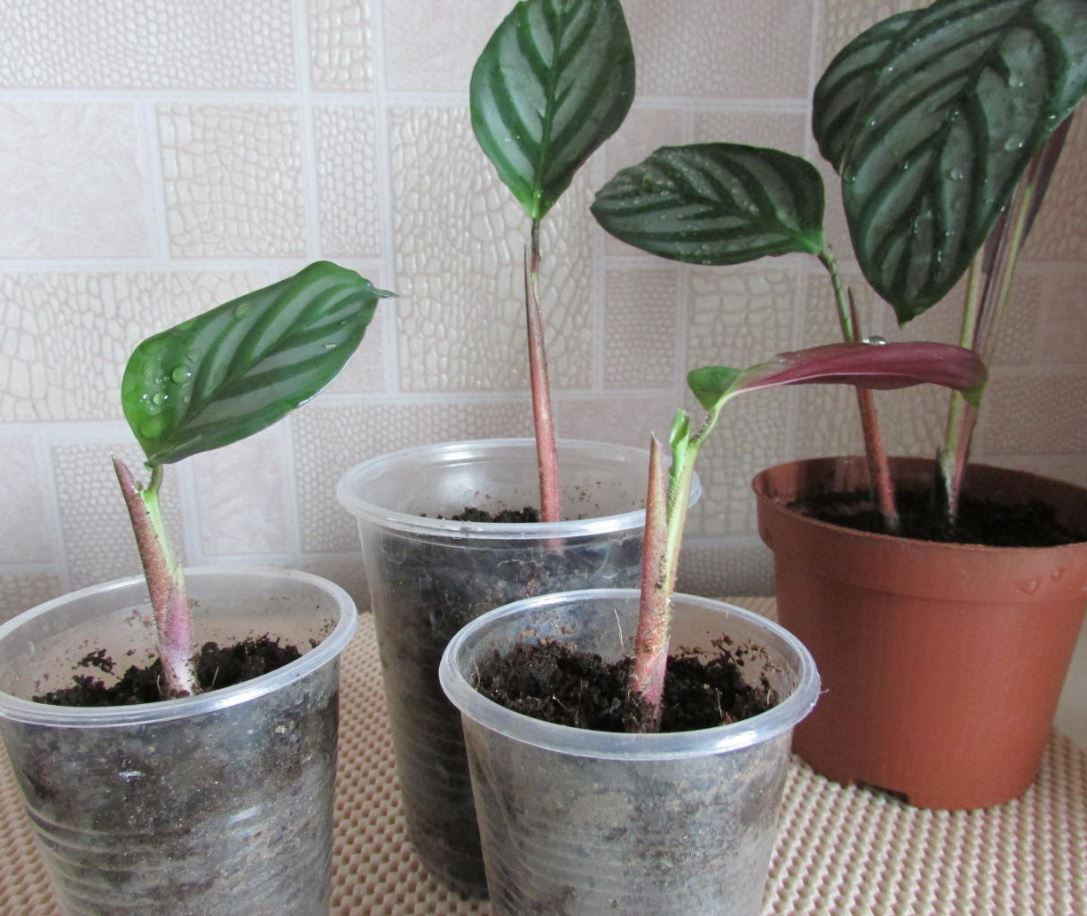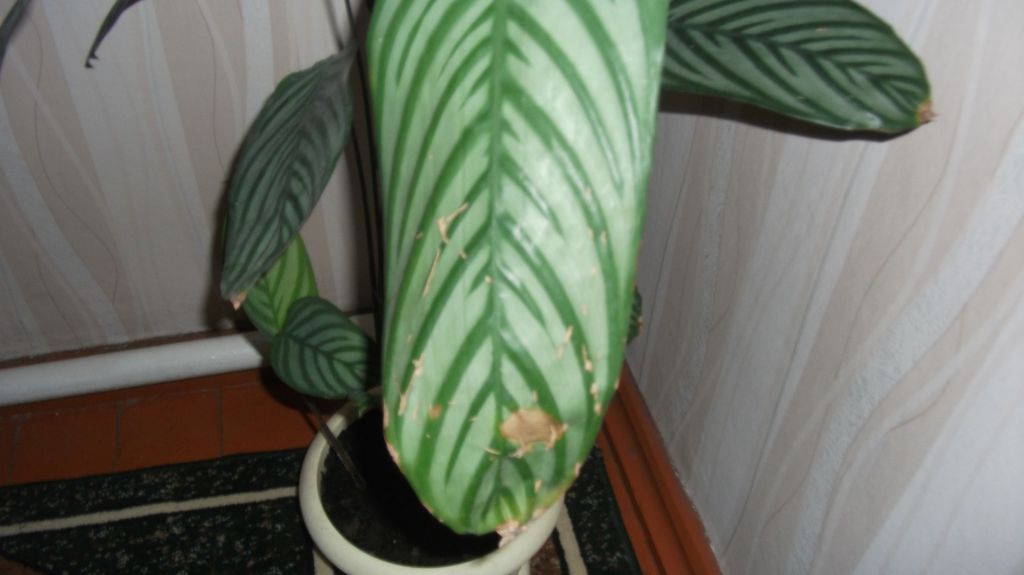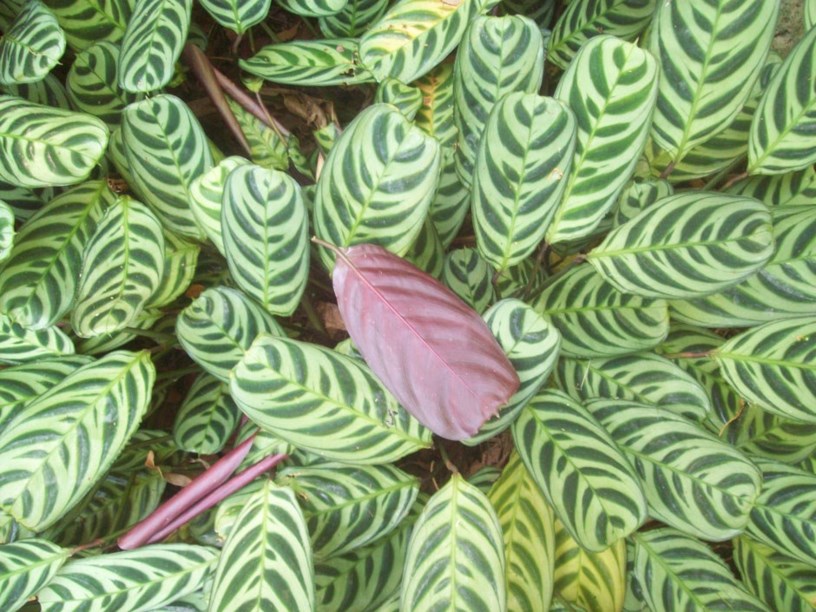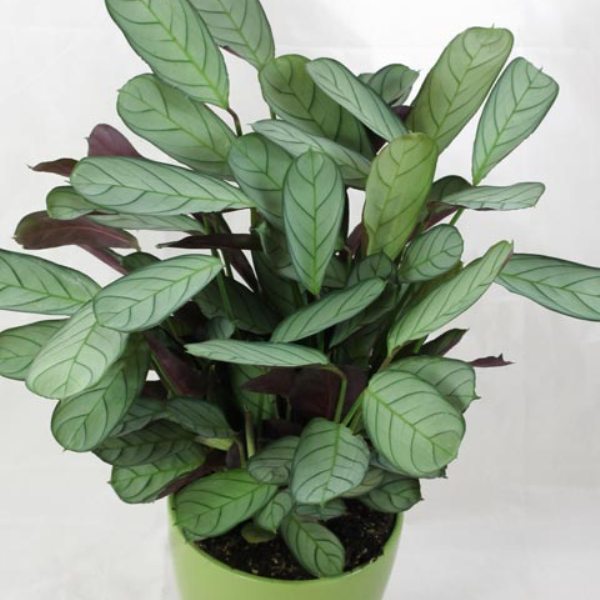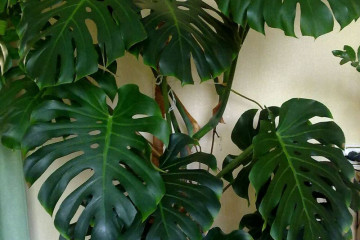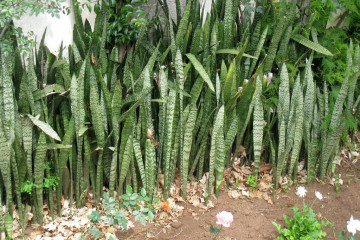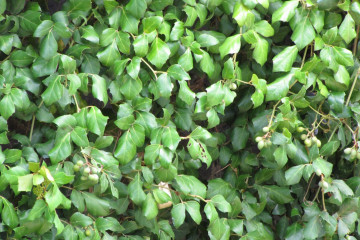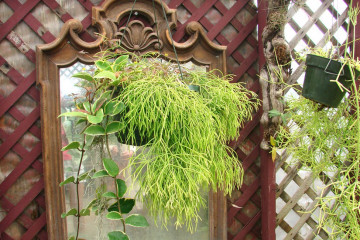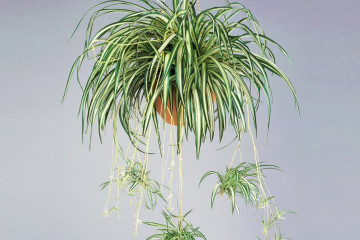Ktenanta - home care and reproduction
Content:
Many people, choosing an indoor flower in their home, pay particular attention to specimens that have original flowers or leaf color. These include the ktenant.
From the history of appearance
The flower is native to South America. More precisely, from the tropical rainforests of Costa Rica and Brazil. The plant belongs to the Marantov family. As a room, it began to be grown in the last century. Initially, no more than a dozen varieties were suitable for home cultivation, but on their basis, a fairly large number of hybrids were created by specialist breeders. Today there is a very diverse mosaic of species of ktenanti. Moreover, the brightest representatives are hybrids of the original varieties.
Description
Most species of ktenanti have an interesting contrasting leaf. The homeland of this plant is South America, where this evergreen deciduous shrub can be easily found in its usual habitat - in the jungle.
For such a flower as a ktenant, care at home is not too difficult to organize. This native of the tropics is not overly whimsical. Due to its very compact size, the ktenant's flower will perfectly fit into even the smallest room.
Blooming ktenants when caring for her at home is a rather rare phenomenon. Even if the plant is provided with as close to natural conditions as possible, it is not at all a fact that buds will ever appear. However, most flower growers are not at all upset by this fact - the flower looks as a whole rather nondescript. It is a small spikelet of red or white color.
Popular varieties
There are a large number of tropical flower varieties, therefore, it is worth considering in more detail those varieties that are best suited for planting in an apartment on a windowsill.
Ktenant Oppenheim
Ktenant Oppenheim creates a minimum of problems in home care. It is often chosen by those who do not like to spend a lot of time caring for flowers. Ktenanta Oppenheim is a fairly tall species that grows in a pot up to 120 cm, in nature - up to almost 2 meters. The leaves of this variety are characterized by a lanceolate shape. They grow up to 20 or 30 cm in length. The color of the foliage of Oppenheim's calathea is an alternation of grayish-green and gray stripes.
Ktenanta Lubbers
Ktenanta Lubbers is another optimal variety for the windowsill. It is very easy to look after him.The description of the variety is as follows: plant height - from 80 to 100 cm, oblong leaves, dark green above, pale green with variegated veins in the lower part.
Ktenanta Amagris
Many people know Ktenant Amagris. This herbaceous perennial has oval oblong leaves that range in length from 15 to 25 centimeters. Their color is silvery green, very light, along the veins there are thin stripes of a dark green hue. Another feature of the Amagris leaf is the burgundy shade of its lower part. All together it looks very impressive and original.
Ktenanta pubescent
Among the flowers, ktenants of different types of ktenant, pubescent is considered the most capricious. The plant is especially picky about air humidity, temperature and drafts. The flower looks very interesting. It has dark green ovoid leaves with light green stripes. The latter look as if they were painted with paint with a brush. The variety grows pubescent up to 80 centimeters in height.
Ktenanta compressed
Another interesting variety, which often has a place on the windowsills, is the compressed calathea. This species grows to an average of 90 cm. Among the features of the compressed ctenants are glossy oval-shaped leaves, the length of which can reach 30 cm. They are usually located on high basal carts. At the same time, the leaf blades are whole-edged, of a dark green saturated shade.
Ktenanta Burle Maxi
Many people know Ktenanta Burle Maxi as the smallest plant in the family (up to 20 cm), which is characterized by very original colored leaves. The foliage itself is thick, almost rectangular in shape with wide dark stripes and a dark purple seamy side. In nature, Burle Maxi forms an almost continuous carpet, consisting of bright leaves, the length of which is 10 cm, the width is 5 cm.
Ktenanta Setosa
Ctenant Setoses have elongated dark green ovoid leaves. The longitudinal stripes located on them are most often colored in a gray or light green shade. Plant height can reach 80-90 centimeters. The perennial feels quite comfortable as a houseplant and does not require special conditions for successful cultivation.
Ktenanta Tricolor
The main feature of the tricolorr ctenants is (as the name suggests) tricolor leaves. It is a hybrid of the Oppenheim variety, with striped yellow-green leaves and a bright purple underside. Outwardly, the flower resembles one of the varieties of Stromant.
Home care
Any indoor plant needs proper care for normal growth. In the case of the ktenant, we are talking about the following significant points.
Temperature regime
The flower is highly sensitive to any temperature extremes. Drafts and hypothermia of the root system can provoke illness or even death. The soil without fail, regardless of the season, must warm up above + 18 ° С. In summer, the optimum temperature is +22 degrees.
Lighting
Lighting is required bright enough, but diffused. If the light is too bright, the leaves may begin to fade, the size of the plates will decrease. In winter, indoor shrubs in most cases will require additional lighting due to the short daylight hours. You can solve the problem with fluorescent lamps.
Watering
Planting requires moderate watering. In warm weather, the soil needs to be moistened more often than in winter. Neither overdrying nor waterlogging should be allowed under any circumstances. Well-settled soft warm water is best suited for the procedure. The use of water passed through a filter is allowed.
Spraying
Spraying will be required to maintain a suitable humidity level.
The procedure in the summer should be carried out twice a day. It will not be superfluous from time to time to put the pot in a tray with damp moss.
Humidity
To maintain a high level of humidity, along with spraying, it is recommended to get a humidifier. With its regular use, the ktenant will feel especially comfortable.
Priming
When planting a plant, it is imperative to organize drainage at the bottom of the pot. The soil itself should be slightly acidic, loose and nutritious. It is allowed to use ready-made substrates for arrowroot or azaleas.
Top dressing
In spring and autumn, mineral fertilizers must be applied to the soil at a frequency of 1 every two weeks. In the cold season, it is enough to use top dressing once a month and a half.
Breeding features
Many florists are interested in how ktenants reproduce.
Germinating seeds
It is very problematic to propagate a culture by germinating seeds, since it practically does not bloom in room conditions. Accordingly, a problem arises in the search for planting material.
Rooting cuttings
Often the flower is propagated by apical cuttings. To do this, they are cut during the summer period, carefully making sure that at least three leaves are present on each cuttings. The cuttings are placed in a container with water, carefully covered with plastic wrap. When young roots appear, the seedling can be moved into the ground.
Air layering
Air layers are a section of a plant that is specially stimulated to form roots by being surrounded by soil. This method is practically not used with a nurse.
Dividing the bush
Most often, the described indoor flower is propagated by dividing the bush. As a rule, the method is applied on an adult specimen. The plant is pulled out of the ground, the roots are shaken off the soil, divided into several parts, trying not to damage the root system, and transplanted into different containers.
Transplant features
Young specimens are usually replanted annually in late spring. Older plants are quite capable of growing in one place for about 3-5 years.
When transplanting, especially close attention should be paid to the size of the pot. It is selected in direct proportion to the size of the rhizome. In no case should you choose too large a container. The plant will be uncomfortable in it. Excess soil can turn sour and become a place for mushroom mosquitoes to accumulate. The best option would be ceramic pots, in which moisture evaporates, including through the side walls.
Growing problems
In the process of growing ktenants, you can face a number of problems. Most often, we are talking about the following points.
Yellowing and falling leaves
In some cases, the leaves may curl, turn yellow, and begin to dry. The answer to the question of why this happens most often lies on the surface. Usually, leaf fall is associated with a lack of watering or with stagnation of moisture. It is enough to reconsider the organization of soil moisture and start doing everything right for the plant to come to life.
Blanching leaves
The most common cause of blanching leaves is too low air temperature. A draft can also cause a similar problem. Moving the crop pot to a more comfortable location will quickly restore a healthy appearance to the plant.
Drying the tips of the leaves
An incorrect watering regime can also lead to drying out of the tips of the leaves.The fact is that water for irrigation displaces air from the pores of the substrate, which leads to oxygen starvation of the culture. If you do not fill the soil, the problem will be resolved by itself.
Falling of the lower leaves
As a rule, the falling of the lower leaves indicates the beginning of the process of decay of the root system. The number and volume of irrigation should be reduced.
Pests
The greatest harm to the ktenante is caused by scale insects and spider mites. Due to the fault of the first, brown plaques appear on the surface of the stems and leaves, sucking out the cell sap. As a result, the leaves begin to dry and fall off. Wiping the foliage with soapy water and spraying with 0.15% Actellik solution will help to solve the problem.
As for the red spider mite, the infected leaves become paler, white spots appear on them, and they begin to fall off. You can effectively fight the pest with the help of Derris, Fitoverm, Fufan or Actellik preparations.
Signs and superstitions
A number of superstitions are associated with the flower. Moreover, all of them are predominantly positive:
- If you put a ktenant in the bedroom, family relationships will become more harmonious and tender.
- The plant helps to restore strength, it should definitely be started by people experiencing a stressful situation or suffering from prolonged depression.
- Placing a flower in the nursery will help the child unleash their creativity and make them more purposeful.
To believe or not to believe in omens is everyone's personal business. The flower is really worth it to decorate any room.
Video
